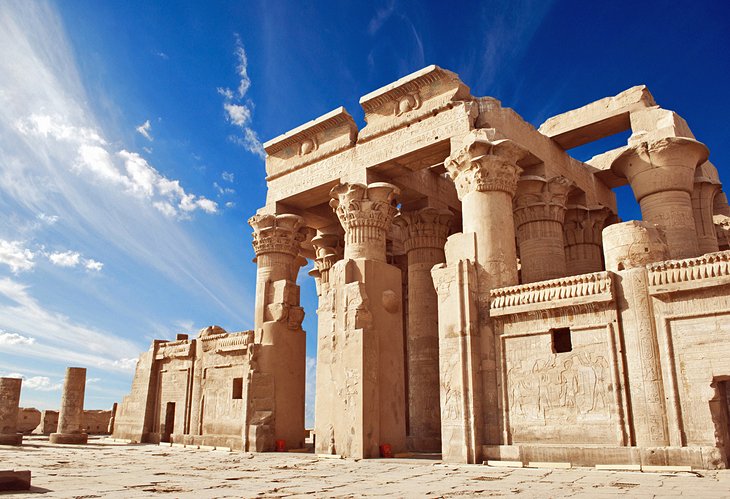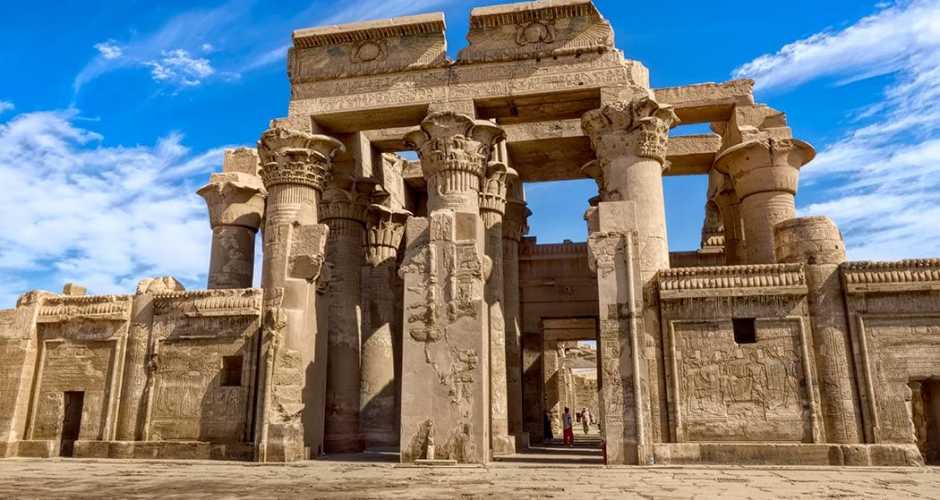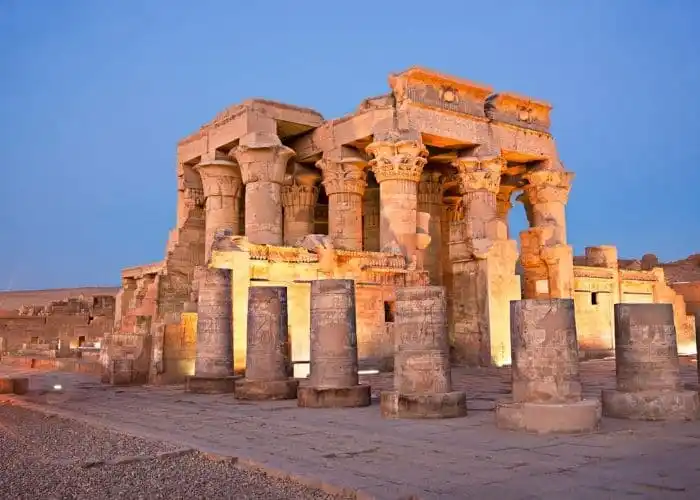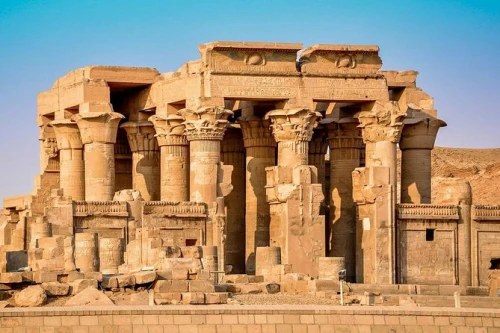
Kom Ombo
Travel back in time with Luna Travelersas we guide you to the awe-inspiring Kom Ombo Temples—a remarkable symbol of ancient Egyptian spirituality and innovation.
Located on the west bank of the Nile just south of Aswan, this extraordinary site stands out for its dual dedication and harmonious architectural symmetry.
Why Visit Kom Ombo?
Kom Ombo is unlike any other Egyptian temple. What sets it apart is its dual dedication: one half honors Sobek, the crocodile god of fertility and strength, while the other is devoted to Haroeris (Horus the Elder), the falcon-headed god of protection and healing. These deities reflect the Nile’s dual nature—both nurturing and destructive.
This theme is echoed in the temple’s symmetrical design: twin entrances, dual sanctuaries, and a double hypostyle hall, offering a rare glimpse into a sacred space made for two.

🏛 Exploring the Enchanting Complex
Your visit begins at the First Pylon, a monumental gateway adorned with stunning reliefs and carvings that lead you into a vast open courtyard. Here, towering columns covered in hieroglyphs share tales of pharaohs, deities, and divine rituals.
The hypostyle hall is a true architectural marvel. Two rows of columns with uniquely styled capitals support the ceiling, casting dramatic patterns of light and shadow. The intricate wall reliefs depict scenes from religious life, medical practices, and ceremonies performed millennia ago.
🐊 A Temple for Two Gods
Each god has a distinct section within the complex:
- Sobek’s northern sanctuary houses the Crocodile Museum, where more than 1,000 mummified crocodiles are on display—offering a rare view into the ancient worship of this formidable deity.
- Haroeris’ southern sanctuary is decorated with elaborate carvings showcasing his various forms, including as the sun god Ra, reflecting light and divine wisdom.

🌅 Beyond the Temple Walls
Outside the main complex, you’ll find even more wonders:
- The sacred lake, once used for offerings and rituals
- The mammisi, or birth house, dedicated to the divine birth of the pharaoh
- The nilometer, an ancient device used to measure the Nile’s flood levels
🖼 A Living Museum of Art and Culture
The temple’s walls are like pages from history—each carving a story, each symbol a mystery. From tales of pharaohs and gods to insights into medicine and astronomy, Kom Ombo’s artwork offers a deeply human connection to the past.
🔍 Unlocking Ancient Mysteries
Kom Ombo invites you to explore Egypt’s spiritual and intellectual legacy. As you walk through its corridors, imagine the priests performing sacred rites, the worshippers seeking divine guidance, and the builders crafting each stone with devotion.
🚣♂️ Beyond the Temples
Kom Ombo is more than a historical site—it’s a portal to Nubian culture and natural beauty. Take a peaceful stroll along the Nile, enjoy a felucca sailboat ride, and watch the sunset paint the sky with brilliant hues. It’s a serene yet soul-stirring experience you won’t forget.
🌍 Luna Travelers– Your Gateway to Kom Ombo
At Luna Travelers, we believe every traveler is unique. We offer a variety of tour options to Kom Ombo, whether you’re looking for:
- Guided group experiences
- Private, customized excursions
- Flexible self-guided adventures
Let us create a journey tailored to your style, pace, and curiosity.

🧳 Travel Tips for Visiting Kom Ombo
- Best time to visit: October to April (cooler and more pleasant weather)
- Footwear: Wear comfortable shoes for exploring uneven terrain
- Sun protection: Bring a hat, sunglasses, and sunscreen
- Stay hydrated: Carry water, especially in warmer months
- Be respectful: This is a sacred site—observe signs and rules
- Photography: Allowed, but follow any posted guidelines
🙋 Frequently Asked Questions
1. What makes Kom Ombo Temple unique?
Its double design and the dual worship of Sobek and Haroeris set it apart. Plus, the temple features well-preserved medical inscriptions that highlight ancient Egyptian knowledge of healing and anatomy.
2. Are there crocodiles at the Kom Ombo Temple?
While you won’t see live crocodiles, the Crocodile Museum displays hundreds of mummified specimens and artifacts related to the worship of Sobek, the crocodile god.
3. What nearby attractions can I visit with Kom Ombo?
You can easily combine your visit with nearby sites like:
- Edfu Temple, dedicated to Horus
- Karnak and Luxor Temples, in Luxor
- Aswan, with its scenic Nile views and Nubian culture
Let Luna Travelers guide you through the magic of Kom Ombo—a destination where ancient gods, grand architecture, and the Nile’s beauty come together to tell a story thousands of years in the making.
